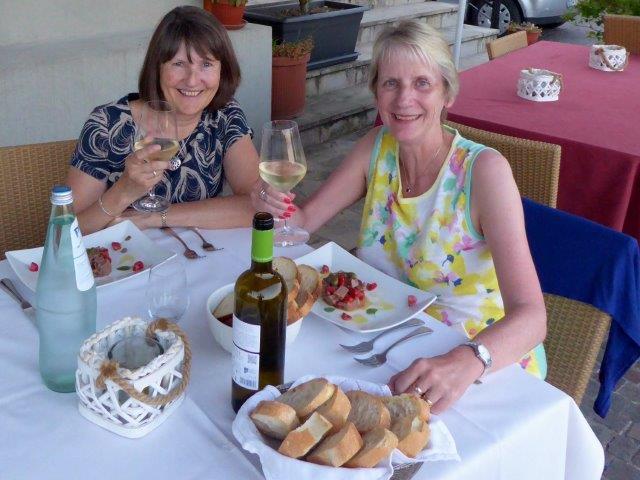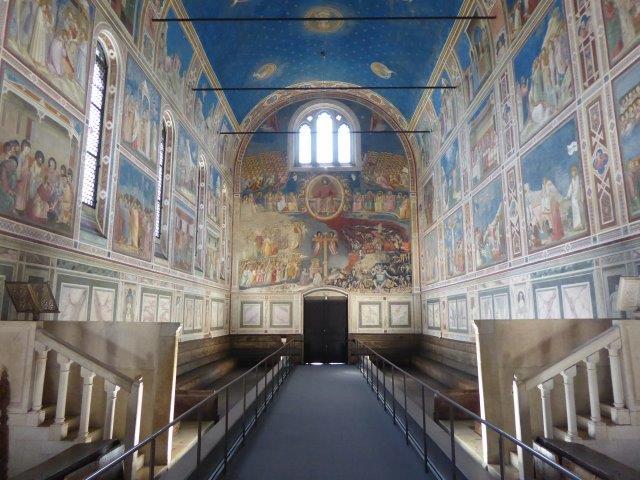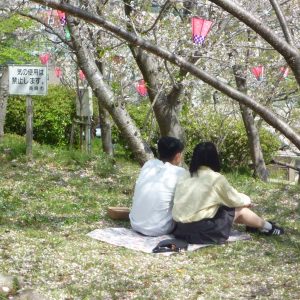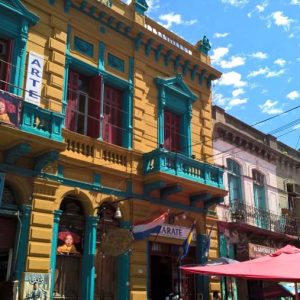It’s always hard to turn your back on Venice, but when the alternative is a holiday in the tranquil Venetian hills, it’s not such a great sacrifice. This cluster of 81 volcanic peaks – the Euganean Hills to give them their proper name – lies inland from the lagoon to the south of Padua and neighbouring Vicenza, their conical outlines visible from afar across the flat plain.
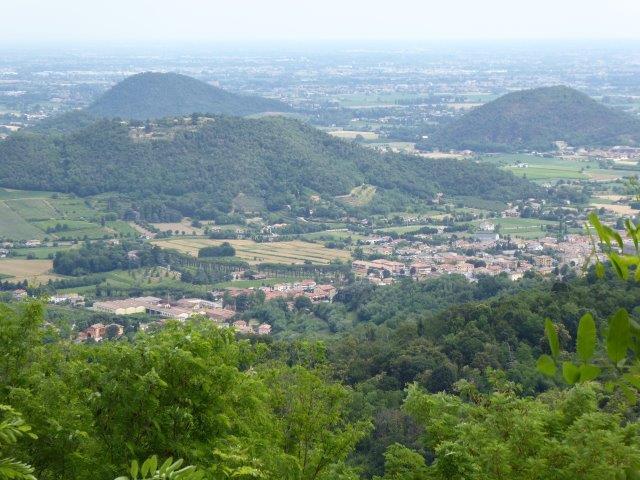 To the east of the hills, fashionable spa resorts use thermal spring water for both medical and wellbeing treatments. A chain of vineyards around the lower slopes combine to form the Euganean wine route, home to a wide variety of varieties including prosecco.
To the east of the hills, fashionable spa resorts use thermal spring water for both medical and wellbeing treatments. A chain of vineyards around the lower slopes combine to form the Euganean wine route, home to a wide variety of varieties including prosecco.
The Euganean Hills have long been a retreat for wealthy Venetians in the hot summer months. Today they are quietly prosperous, dotted with small towns rich in historic buildings but housing everyday working folk. This is authentic Italy, untouched by mass international tourism, and visited mostly by locals.
Popular with Italian walkers and cyclists, it is also features on the programme of active self-guided holidays from Headwater. I’ve always found Headwater to be good on avoiding tourist hotspots in favour of hidden gems where holidaymakers can explore at leisure without the crowds. And for me, this trip ticked all the boxes..
Their comprehensive website gives full details of the 8-night itinerary and four hotels, but having walked the trails in June 2017, I’m sharing my tips for how to make the most of this delightful trip.
Transport
My friend and I flew to Venice Marco Polo – Verona is another possibility – and caught the train to Mestre for the half-hour high-speed journey to Vicenza. There’s a regular bus service from the airport to Mestre, but our bags were delayed coming off the plane for half an hour, so we 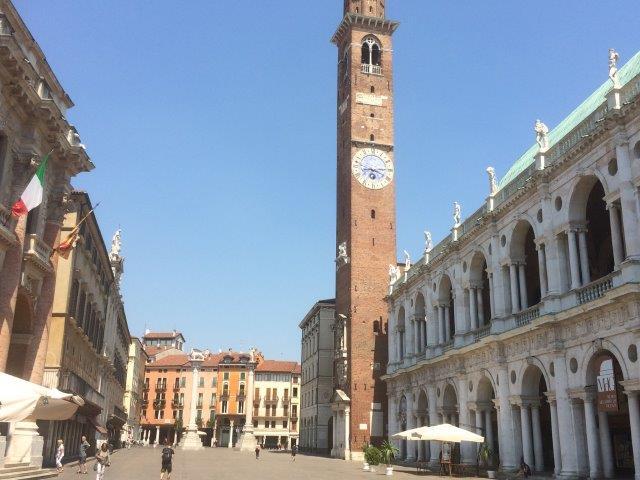 splashed out on a taxi instead – strongly advised if there are any delays. In Vicenza we were met by the Headwater rep, Sara, for the car transfer to our first night’s lodging.
splashed out on a taxi instead – strongly advised if there are any delays. In Vicenza we were met by the Headwater rep, Sara, for the car transfer to our first night’s lodging.
Flights are available from various regional airports and we flew from London-Luton early afternoon, but I’d recommend trying to catch a flight that gets you to your accommodation by late afternoon, simply so that Sara can brief you about the week ahead before dinner. Arriving around 8pm in time for dinner, we were briefed next morning, which inevitably means a later start on the trail.
Walks
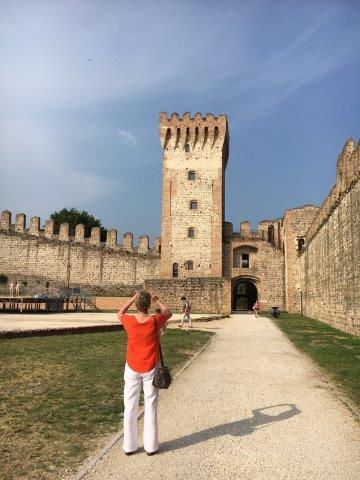 Headwater grade their walks from 1 Boot to 3 Boots, 1 being the easiest. This itinerary is Graded 1+ boots but as a veteran of many Headwater trips ranked 1 or 2 Boots, I’d say this was nearer 2. You get what it says on the tin – hills – and some of the climbs have some long uphill stretches.
Headwater grade their walks from 1 Boot to 3 Boots, 1 being the easiest. This itinerary is Graded 1+ boots but as a veteran of many Headwater trips ranked 1 or 2 Boots, I’d say this was nearer 2. You get what it says on the tin – hills – and some of the climbs have some long uphill stretches.
But inevitably, going up is followed by coming down, and we were treated to some lovely views as we completed a circuit of the hills over the week. The routes are a mix of shady woodland trails and quiet roads with minimal traffic. We met no other walkers despite seeing leaflets of walks in every hotel. The hill roads are popular with Italian road cyclists and you may also meet mountain bikers, especially at weekends. Our four walks ranged from 7 to 11.5 miles and although two offered longer alternatives, in the June unexpected heatwave, we stuck with the shorter options.
Rest Days
Padua is accessible by public transport on various rest days around the circuit, but we chose to go from Galzignano on a Sunday. Buses take about 40 minutes but unfortunately they don’t run on Sunday so we splashed out on a taxi at 20€ per person each way. 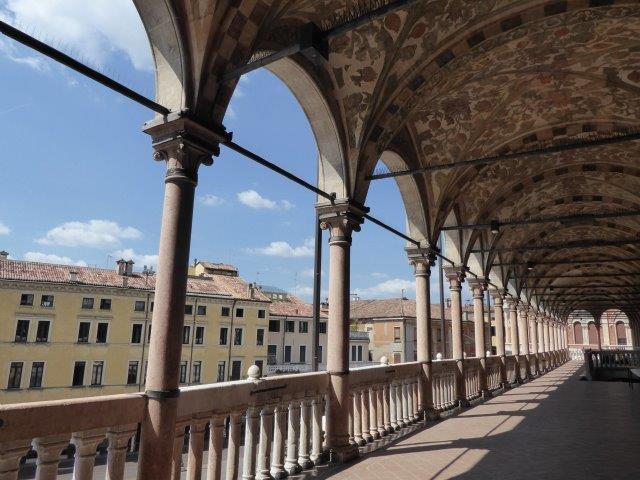 But it took just 25, minutes, dropping us at 9.30 and picking us up at 5, and Padua was blissfully quiet on a Sunday which enabled us to tick off virtually everything on our list apart from the University tour which is also closed on Sundays (Galileo taught here!). We even managed to secure timed tickets for the Giotto frescoes of the Cappella degli Scrovegni, but you’re best to book ahead online to avoid disappointment. The red Citysightseeing bus is a great way to get your bearings and some historical background.
But it took just 25, minutes, dropping us at 9.30 and picking us up at 5, and Padua was blissfully quiet on a Sunday which enabled us to tick off virtually everything on our list apart from the University tour which is also closed on Sundays (Galileo taught here!). We even managed to secure timed tickets for the Giotto frescoes of the Cappella degli Scrovegni, but you’re best to book ahead online to avoid disappointment. The red Citysightseeing bus is a great way to get your bearings and some historical background.
As we expected, we adored Padua but the big surprise was Vicenza, visited on our rest day at Teolo. Take a taxi to a nearby village to pick up the bus service – details from the hotel owners. Home town to 16th century architect Andrea Palladio, it is listed by UNESCO for its Palladian heritage. Easily walkable in a day, it’s a stunner.
Hotels 
All the hotels are family run, traditional in style, and largely visited by Italians. All of the owners spoke at least basic English and the welcome was warm in each one.
Three were air-conditioned whilst the agriturismo rural hotel provided us with an efficient fan. Don’t expect fancy toiletries or trimmings – the Italian way seems to be shampoo sachets and basic hairdryers – but we were comfortable everywhere and really felt part of the local scene.
Food
My travelling companion is coeliac and always takes her own bag of breakfast cereal. But gluten-free meals proved no problem, if flagged up in advance. She was offered gluten-free bread, biscuits and pasta. We even found a limited range for picnics in local supermarkets including cereal bars and beer!
Departures
Walking in the Venetian Hills departs every two days from May to mid-October. June was delightful – though unseasonably hot during our week, even back in the UK – with cuckoos and cicadas calling in the woodland. September and October might be more comfortable with the added advantage of changing colours in the woods and vineyards on later departures. City breaks can be tacked on in Venice or Verona when booking.
